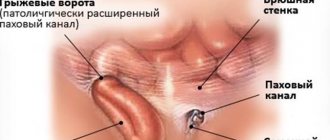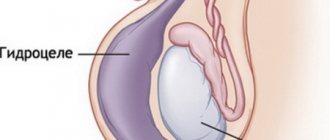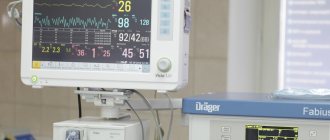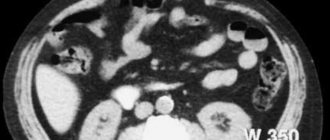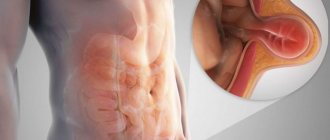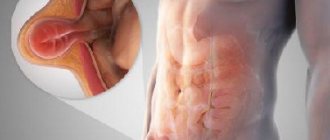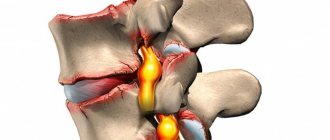An inguinal hernia is a pathological protrusion of internal organs outside the abdominal cavity. Inside this reservoir there may be intestinal loops, omentum and other structures. In childhood, congenital forms of pathology are most common, especially in premature infants. Boys suffer from this disease 10 times more often than girls.
Any situation that causes an increase in pressure in the abdominal cavity can provoke the formation of a hernia: heavy lifting, prolonged crying, screaming, constipation, a strong, prolonged cough. To avoid a threat to health, pediatric surgeons recommend that children undergo surgery to remove an inguinal hernia immediately after diagnosis. It is called hernioplasty.
Indications for surgery
The absolute reason for emergency surgical intervention is a strangulated hernia - a dangerous complication that, without timely help, threatens the lives of children. With it, there is a gradual necrosis of the structures that are inside the hernia due to the cessation of blood circulation in them. This is accompanied by severe intoxication and severe pain in the abdominal area.
Emergency assistance is needed for acute intestinal obstruction. It is formed if intestinal loops get into the hernial sac, resulting in an obstacle to the movement of feces.
In all other cases, even with a mild degree of the disease, a planned operation to remove an inguinal hernia in children is performed.
News & Events
December 15, 2017
Igor Nelyubov, a pediatric surgeon at the Far Eastern Federal University Medical Center, spoke about the occurrence of inguinal hernias in children and methods of their treatment.
A common cause of concern for mothers is the occurrence of an inguinal hernia in their child. Pediatric surgeon, head of the operating department of the FEFU Medical Center Igor Nelyubov spoke about the causes, risks and treatment methods of this disease.
An inguinal hernia is a pathological protrusion of the peritoneum into the inguinal canal, explains Igor Vladimirovich. — The contents of the hernial sac are intestinal loops, and in girls, the ovary and fallopian tube. In utero, boys develop a canal that runs from the abdominal region to the groin. This is due to the process of descent of the testicle; the testicle pulls part of the peritoneum from the abdomen to the groin. This creates conditions for possible movement of internal organs. Therefore, the incidence of inguinal hernia in boys is 6-10 times more common. In girls, the cause of a hernia is the pathology of maturation of the element that fixes the uterus, the so-called round ligament of the uterus.
By the time of birth, in most children, this connection with the abdominal cavity closes on its own. When this does not happen, an inguinal hernia forms. Clinically, it can manifest itself both from birth and much later. Visually, a hernia looks like a small “swelling” in the groin area. It increases with “straining” and is easily pushed inward. Often, parents do not notice the manifestations of an inguinal hernia until it is strangulated, since it is not accompanied by pain, and becomes visually noticeable only when it reaches a significant size.
The main danger of a hernia is its possible strangulation. Incarceration is an island-like “sticking” of the contents of the hernial sac (loop of intestine or ovary), pinching of the strangulated organ by narrow hernial orifices, and, as a consequence, disruption of the blood supply and loss of organ viability for several hours. Often a strangulated hernia occurs against the background of increased intra-abdominal pressure: crying, screaming, coughing, constipation. Infringement of an inguinal hernia is manifested by severe anxiety, cramping pain in the abdomen, and sometimes vomiting. Upon examination, the swelling in the groin area is dense and irreducible. In this situation, the only correct solution is to call an emergency room and be hospitalized in a surgical hospital. If signs of infringement persist, urgent surgery is required. Technically, surgery for a strangulated hernia is more difficult and carries a greater risk of complications.
According to the classical canons of pediatric surgery, surgical treatment of inguinal hernia is indicated upon diagnosis, including for newborns. In practice, as a rule, operations for inguinal hernia are performed on children over the age of 6-12 months. It is believed that before this age, the operation is technically somewhat more complicated, and anesthesia for a child is safer at this age. “Delaying” the operation is possible provided that the hernia does not tend to strangulate. The principle of inguinal hernia surgery is to separate the abdominal cavity and the hernial sac, preventing the possibility of internal organs getting into it. The operation is delicate, requiring good technique - careful and careful preparation while preserving all anatomical structures: the spermatic cord - the vas deferens and the vessels of the testicle, as well as the inguinal nerve.
In children, unlike adults, mesh implants are not used. The operation is always performed under general anesthesia. The average duration of the operation is 15-30 minutes. In addition to traditional hernia repair, there is a method of endovideosurgical correction of this disease. This is “laparoscopic hernioplasty”. The essence of this method lies in suturing the peritoneal defect in the area of the internal inguinal ring with a sealing suture, which prevents internal organs from entering the hernial sac. The advantage of laparoscopic hernioplasty is considered to be high cosmeticity - the absence of visible postoperative scars, the absence of trauma to the elements of the spermatic cord and the ability to diagnose the presence of a hernia on the opposite side in doubtful cases. If there is a concomitant diagnosis of “umbilical hernia,” a laparoscope is inserted into the abdominal cavity through a defect in the navel area. At the end of the operation, this defect is sutured, which makes it possible to simultaneously eliminate the umbilical hernia.
Possible contraindications
Emergency surgery is performed for life-saving reasons. Planned intervention is postponed or canceled if the patient has the following problems:
- individual intolerance to anesthesia;
- acute infectious diseases;
- exacerbation of chronic pathologies;
- inflammatory processes in the abdominal organs.
Possible contraindications and the balance between the risks and benefits of surgical intervention are assessed in each specific case.
Diagnostic measures
The main method for determining an inguinal hernia is examination by a surgeon. The protrusion can be clearly felt upon palpation, and in a lying position you can carefully straighten the protrusion and feel the enlarged inguinal ring. Children are simply examined carefully; for older children, the doctor may ask them to bend over, cough, and strain to determine the elasticity and structure of the hernia.
The symptoms of an inguinal hernia may be similar to other diseases, so instrumental examination methods are used to clarify the diagnosis and assess possible complications. These include:
- Ultrasound of the abdominal organs;
- Ultrasound of the pelvic organs for girls;
- Ultrasound examination of the scrotum and inguinal canaliculi for boys.
Symptoms
The main symptom that immediately catches your eye is swelling in the scrotum area or in the groin area . Depending on the position of the child, the protrusion may change size or disappear completely. The hernial sac has a soft consistency to the touch, is easy to reduce and does not cause pain.
Soreness is provoked by abdominal muscle tension or compression of the prolapsed organ by the hernial orifice. The structure of the hernia becomes dense with signs of cyanosis.
How is surgery for inguinal hernia performed on children?
Conservative methods of treating the disease are practically not used, since the effectiveness of such methods is extremely low, and the risk of strangulation of the hernia is high. The only correct solution is surgical removal of the formation.
There are two options for hernioplasty:
- open access;
- using laparoscopic equipment.
The optimal method of surgery is chosen by the doctor based on examination data, the child’s age and possible risks. The type of intervention determines how long the operation for an inguinal hernia in a child lasts. The operation time can vary from 30 minutes to an hour, taking into account anesthesia. Regardless of the chosen method, deletion occurs according to a certain algorithm:
- incision of the hernial sac and restoration of the anatomically correct location of internal organs and tissues;
- suturing of the hernial orifice;
- strengthening the inguinal canal or the patient’s own tissues.
All manipulations are performed under general anesthesia.
In modern pediatric surgery, laparoscopic hernioplasty is considered the preferred method of treatment. It is less invasive: minimal blood loss and small incisions reduce the risk of complications and shorten the recovery period. In some cases, it is possible to perform an open operation on a child to remove an inguinal hernia in the scrotal area. The doctor determines the method of performing the operation individually in each specific clinical case.
What is an inguinal hernia?
Inguinal hernia is one of the most common pathologies in young children. Most often it is congenital, and there is evidence that in some newborns it appears as a result of genetic predisposition. Pediatric surgeons diagnose it in approximately 5% of children, and in the group of infants born prematurely, the frequency of this pathology is, according to various estimates, from 15% to 25%.
In older children, it can develop up to primary school age. Additional risk factors are obesity, low physical activity, and abdominal wall weakness.
It occurs in both boys and girls, but in boys it is much more common. Usually it forms only on one side, right or left, but it can also be bilateral. Due to physiological differences in small male and female patients, it is structured slightly differently in them. As in the case of any other hernia, its essence is that part of the internal organs protrudes through the gap (in this case, the inguinal canal) outward, occupying an incorrect position. These can be parts of the intestines, bladder, omentum, uterine appendages (in girls).
The hernia can be direct, when it enters the inguinal canal, bypassing its internal opening, or oblique, when it exits through the internal inguinal ring. In children, it is most often oblique, and a congenital inguinal hernia is almost always oblique. In boys, the pathology can also be inguinal or inguinal-scrotal, depending on the location.
Rehabilitation after surgery to remove an inguinal hernia in children
After surgery for an inguinal hernia, children, as a rule, recover quickly and without any problems. Parents will have to somewhat limit the child’s mobility, change bandages regularly, and also follow a number of simple rules.
- For 5–7 days after the intervention, it is undesirable to give children foods that increase gas formation and the risk of constipation - beans, potatoes, sweet pastries, fatty meats and fish.
- For 1-2 weeks you will have to limit physical activity: running, jumping, bending and squatting.
- Bathing and washing should be postponed until the wounds have completely healed.
- After removing the bandages, it is necessary to treat the wound area with a local antiseptic for 1–2 days.
Under no circumstances should you:
- warm the area of inflammation;
- apply medicinal ointments and healing compounds to the wound;
- give babies any medications without consulting a doctor.
Is it necessary to operate on an inguinal hernia?
Most often - yes. Unlike an umbilical hernia, which often disappears on its own in children under 2 years of age, a protrusion in the groin is a common indication for surgery. You should not postpone an appointment with a pediatrician, because this disease is accompanied by the risk of strangulation and damage to internal organs.
However, not in all cases it is necessary to operate immediately. If the patient is young, the size of the hernia is small, and the risk of strangulation is low, the pediatrician at the clinic may apply conservative treatment and recommend that parents postpone the operation until the patient is 1 year old, or for some other optimal period. Therefore, you should always start by making an appointment with a pediatric surgeon in the clinic where the child is being seen, and then, having developed a strategy for solving the problem together with the doctor, go to the hospital one day for the operation.
Possible complications after surgery
Complications after removal of an inguinal hernia are quite rare. In 0.5–1% of cases the following may occur:
- slight swelling;
- temperature increase;
- accumulation of lymphatic fluid in the tissues of the pelvic organs.
The risk of recurrent hernia does not exceed 1%. Relapses are more often observed in premature babies and children who have undergone emergency intervention. The chances of a new hernia forming increase if the child moves little, is obese, or does not exercise.
